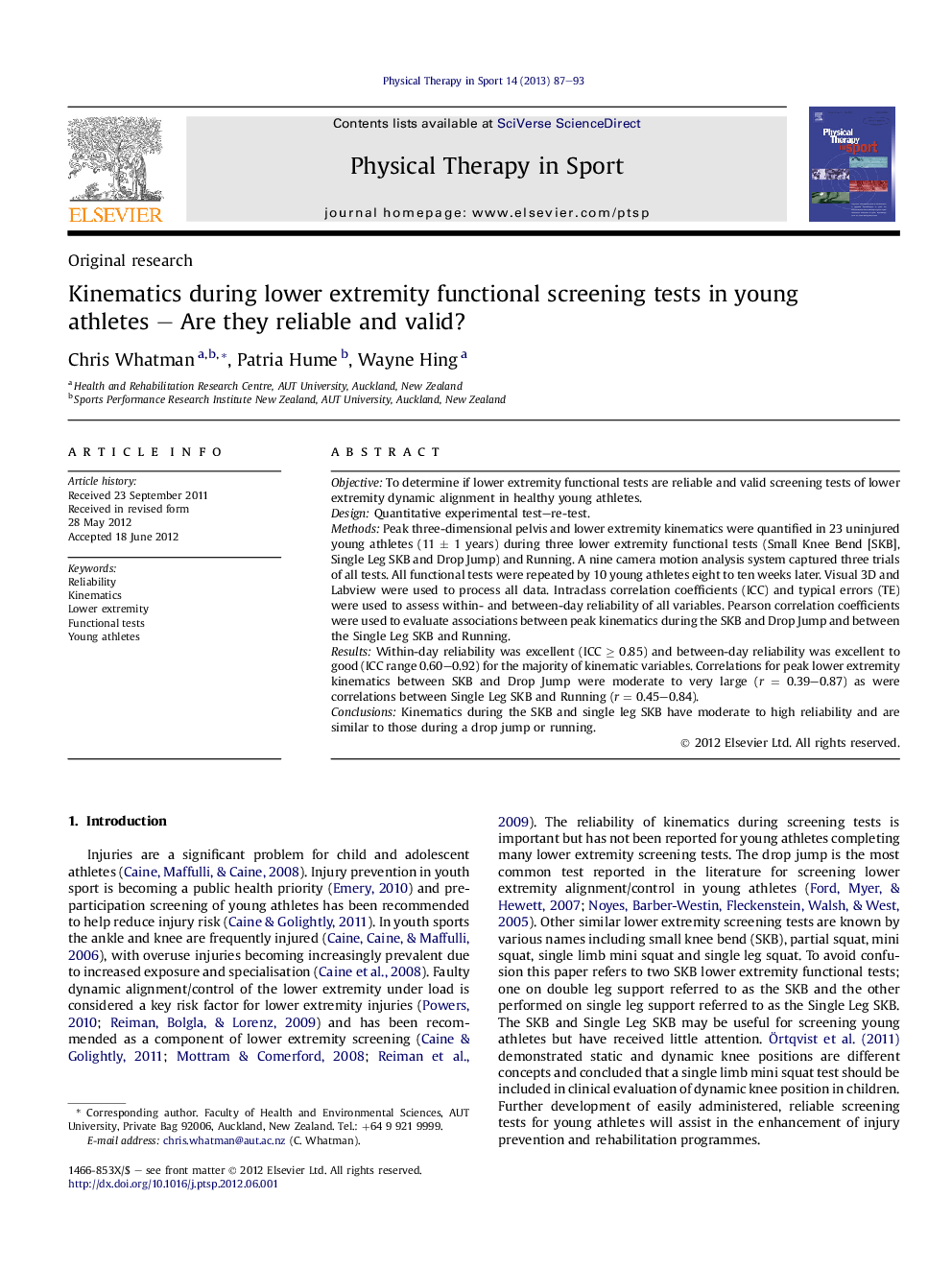| Article ID | Journal | Published Year | Pages | File Type |
|---|---|---|---|---|
| 2705856 | Physical Therapy in Sport | 2013 | 7 Pages |
ObjectiveTo determine if lower extremity functional tests are reliable and valid screening tests of lower extremity dynamic alignment in healthy young athletes.DesignQuantitative experimental test–re-test.MethodsPeak three-dimensional pelvis and lower extremity kinematics were quantified in 23 uninjured young athletes (11 ± 1 years) during three lower extremity functional tests (Small Knee Bend [SKB], Single Leg SKB and Drop Jump) and Running. A nine camera motion analysis system captured three trials of all tests. All functional tests were repeated by 10 young athletes eight to ten weeks later. Visual 3D and Labview were used to process all data. Intraclass correlation coefficients (ICC) and typical errors (TE) were used to assess within- and between-day reliability of all variables. Pearson correlation coefficients were used to evaluate associations between peak kinematics during the SKB and Drop Jump and between the Single Leg SKB and Running.ResultsWithin-day reliability was excellent (ICC ≥ 0.85) and between-day reliability was excellent to good (ICC range 0.60–0.92) for the majority of kinematic variables. Correlations for peak lower extremity kinematics between SKB and Drop Jump were moderate to very large (r = 0.39–0.87) as were correlations between Single Leg SKB and Running (r = 0.45–0.84).ConclusionsKinematics during the SKB and single leg SKB have moderate to high reliability and are similar to those during a drop jump or running.
